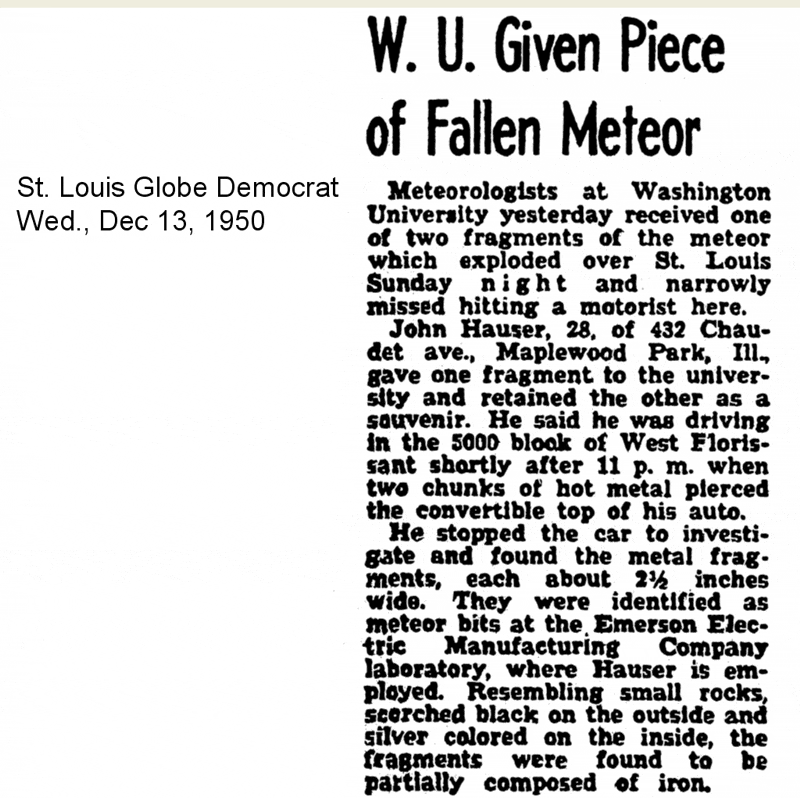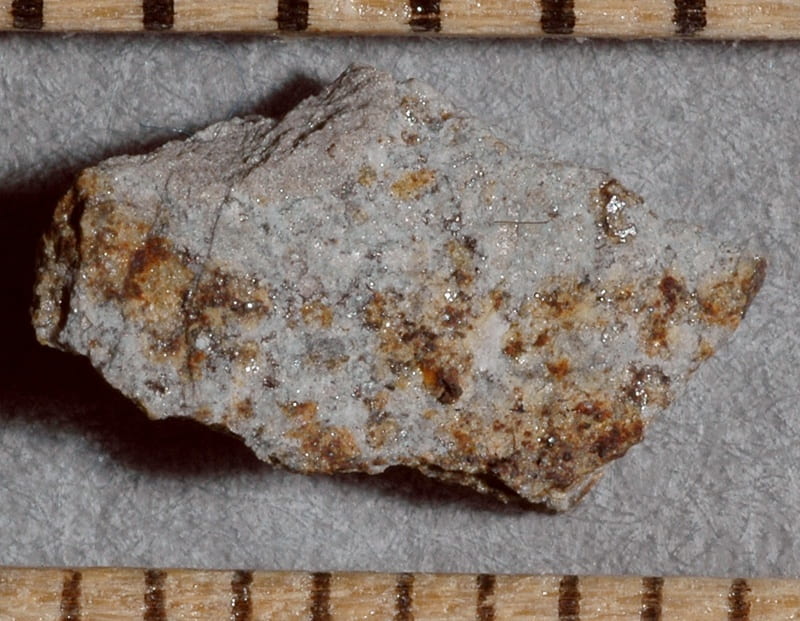The St. Louis meteorite
Below are some newspaper articles, in chronological order, about the St. Louis meteor and meteorite.



The article above is amusing in its inaccuracies. People who study meteorites are called meteoriticists. Meteorologists are people who study weather. A meteor is the flash of light seen in the sky. The rock itself is a meteorite (not “meteor bits”!). The wording “two chunks of hot metal” is questionable. St. Louis is an ordinary chondrite (H4). That means it’s a stony meteorite, not an iron. It is a common misconception that meteorites are hot when they land. “Outer space” is cold. As a meteoroid passes through the atmosphere, the outside gets exceedingly hot. It gets so hot that it melts and immediately sloughs off. A stone is not a good conductor of heat, and the whole passage through the atmosphere takes a few seconds. As a consequence of all these things, freshly fallen meteorites are cold, except perhaps for the smallest ones. There are accounts of frost forming on a freshly fallen meteorite. Finally, all meteorites are “partially composed of iron.”
Washington University (this Department, at least) does not now possess the “fragment” mentioned in the article above. We do not know what became of it.
The article below is more accurate in its wording.



Meteoritical Bulletin entry for the meteorite named St. Louis